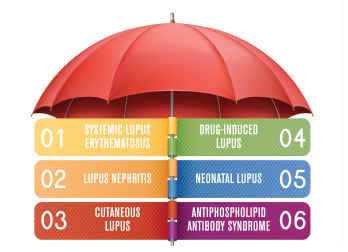
Ovchinnkov Vladimir / shutterstock.com
A recent study published in Lupus Science & Medicine lays out five of the top barriers impeding progress in lupus diagnosis and treatment.1
The Addressing Lupus Pillars for Health Advancement project (ALPHA), led by the Lupus Foundation of America (LFA), researchers at the Tufts School of Medicine Center for the Study of Drug Development (Tufts CSDD) and 13 international lupus experts representing the Global Advisory Committee, serves as the first global consensus on key issues in lupus.
“We cast the net very widely, thinking about where we are with lupus diagnostic delays, treatment options, access to care, clinical trials, and clinical and basic research—everything people with lupus are facing every day,” says senior author Karen Costenbader, MD, MPH, director of the lupus program at Brigham and Women’s Hospital, Boston, professor of medicine at Harvard Medical School, Boston, and chair of the LFA Medical-
Scientific Advisory Council. “Our key finding was that, of all the barriers, heterogeneity of the disease is among the primary, [because] it cuts across drug development, clinical care and access to care.”
In fact, respondents to the survey developed by the ALPHA project identified 30 diseases or disease terminologies related to lupus, reflecting a lack of consensus as to what constitutes the disease. Lupus nephritis, cutaneous lupus and antiphospholipid antibody syndrome were most commonly cited under the “lupus umbrella.”
“There are many different kinds of lupus—lupus that affects only the skin or only blood cells or only the brain,” says Dr. Costenbader. “Sometimes, it is labeled incomplete lupus or mixed connective tissue disease or undifferentiated connective tissue disease. The jargon gets people confused and, [although] we didn’t come to firm conclusions, it [may be] the first time people [were] thinking about what does and doesn’t go under the umbrella of lupus.”
For the study, the LFA and Tufts CSDD together identified criteria to establish the Global Advisory Committee, a geographically diverse group of professionals and thought leaders from industry, academia and patient advocacy. The committee brainstormed and formulated a list of barriers, developed in part by conducting 17 in-depth interviews with lupus professionals and patients. They conducted 127 surveys with experts in 20 countries to “prioritize the barriers and nail down what they are,” Dr. Costenbader says. “I think the results will be very useful in thinking about the road map to get resources to address barriers; here are what are the most challenging and here are the easiest to address.”
The survey included 23 questions and asked participants to rank the primary obstacles to lupus diagnosis, treatment, research and care according to their relative impact on delayed drug development, suboptimal clinical care, delayed access to care and inaccurate or delayed diagnoses, and to identify lupus-related disorders.
The top five barriers identified by ALPHA are:
- Lack of diagnostic, predictive and prognostic biomarkers for lupus and lack of biomarkers to predict drug response in clinical trials;
- Flawed clinical trial design;
- Lack of access to clinicians familiar with lupus/limited awareness of lupus among non-expert medical professionals;
- Barriers to effective management of lupus due to social determinants of care in predominantly lower socioeconomic status areas; and
- Lack of treatment adherence.
Disparities
One of the motivations behind the ALPHA project was an attempt to address lupus mortality rates, which dropped in the later decades of the 20th century but have remained stagnant ever since, the study authors say. Mortality rates for lupus patients are three times higher than in the general population without lupus.
Disparities within the lupus patient population also remain a challenge. The disease disproportionately threatens the health of young women from communities of color and low socioeconomic status. Among those with chronic inflammatory diseases, lupus is the leading cause of death in women aged 15–24, higher than diabetes mellitus and HIV.
“One of the big barriers to effective management of lupus is due to social determinants of health,” says Dr. Costenbader. “People of lower socioeconomic status often have many other things on their plates, and there are issues of healthcare access, health literacy and understanding, adherence to medications, and other health problems. These are all compounded in the populations we’re trying to help.”
Research Funding & Drug Development
Additionally—and despite funding increases by the U.S. Department of Defense and the Centers for Disease Control & Prevention—overall funding for lupus research has dropped over the past decade, particularly from the largest source of support, the National Institutes of Health, despite increased interest in lupus-related research.
Drug development, too, remains a challenge.
“There has only been one new lupus medication to receive FDA approval in this country, belimumab, and it’s the first new medication approved in 60 years,” says Dr. Costenbader. “The armamentarium of lupus medications approved worldwide is very thin.”
Overcoming some of the barriers to more effective and robust clinical trials could help advance treatments, ALPHA authors say. More than 30 companies are currently investing in clinical trials for lupus.
“We talked about clinical trial designs that are lumping people together who don’t belong together, or using composite measures that might be effective for one organ system but not another,” says Dr. Costenbader. “We have to be smart about clinical trials so we’re enrolling a specific kind of patient with a specific kind of lupus and designing stronger clinical trials.”
Limited Access to Care
In parts of the U.S., as in other parts of the world, access to rheumatologists and rheumatology specialists also hinders care.
“Something that was really novel was the recognition that the issues we face in one country may be different from those in another, but in some ways, they’re very similar, too,” said Dr. Costenbader. “The cross-cutting issues we see worldwide need to be addressed.”
Project leaders continue to engage the lupus community and in January held an international stakeholder meeting to develop a global road map with specific recommendations to address the identified challenges.
“We are going to look at multi-pronged strategies, such as regulatory and advocacy efforts for drug development, and scientific consensus-building to identify the questions to address in lupus research,” says Dr. Costenbader.
Plans include developing an international communications program and forming working groups to get even more people involved, from regulatory bodies in different nations to advocacy groups and clinical and basic scientists.
“This is really the first international effort aimed at addressing lupus barriers, and now the global community is activated and energized,” Dr. Costenbader says. “I don’t want people to be overwhelmed or disappointed, but we have the energy for what we are trying to accomplish, and the key stakeholders internationally are involved. That’s a really good thing.”
Kelly April Tyrrell writes about health, science and health policy. She lives in Madison, Wis.
Reference
- Manzi S, Raymond S, Tse K, et al. Global consensus building and prioritisation of fundamental lupus challenges: The ALPHA project. Lupus Sci Med. 2019 Jul 19;6(1):e000342.



